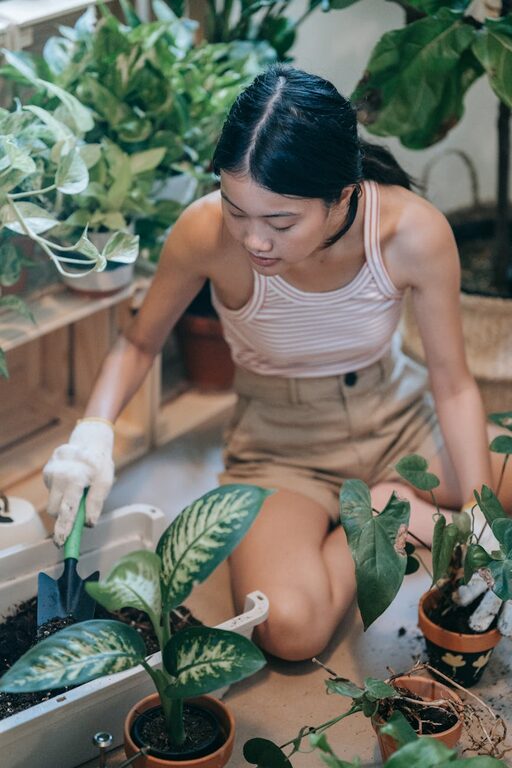Essential Tips for Keeping Your Houseplants Healthy and Thriving

Bringing houseplants into your home adds life, color, and a touch of nature that can brighten any space. However, keeping these green companions healthy requires some basic knowledge and consistent care. Whether you are a seasoned plant enthusiast or a beginner, these practical tips will help your houseplants thrive and enhance your living environment.
Understanding Your Houseplant’s Needs
Every plant species has unique requirements, but some general factors are crucial for their health:
– Light: Plants need light for photosynthesis, but the intensity and duration vary by species.
– Water: Both overwatering and underwatering can harm plants.
– Soil: The right soil type provides nutrients and proper drainage.
– Humidity and Temperature: Many houseplants prefer stable humidity and temperatures that mimic their natural environment.
Knowing these parameters for your specific plants is the first step toward successful care.
Choosing the Right Location
Assess Light Conditions
Identify how much natural light your space receives:
– Bright, direct sunlight (near south-facing windows)
– Indirect or filtered light (north-facing windows or shaded areas)
– Low light zones
Select plants suited to those conditions—succulents and cacti thrive in direct sunlight, while ferns and pothos prefer indirect or lower light.
Avoid Drafts and Extreme Temperatures
Keep plants away from cold drafts, heaters, or air conditioners. Sudden temperature changes can stress plants and cause leaves to drop.
Watering Smartly
Understand Your Plant’s Water Needs
Each plant has a preferred moisture level. For example:
– Tropical plants often like consistently moist soil.
– Succulents prefer the soil to dry out completely between waterings.
Check Before You Water
Stick your finger about an inch into the soil. If it feels dry, it’s time to water. If it’s still moist, wait a few days. This simple test prevents overwatering, one of the most common mistakes.
Water Thoroughly, Drain Excess
When watering, do so until water drains out of the pot’s bottom. This ensures roots get adequate moisture and flushes out excess salts from fertilizer. Make sure the pot has drainage holes to prevent waterlogging.
Proper Soil and Pot Selection
Use Quality Potting Mix
Avoid garden soil, which may compact and lack nutrients. Use a potting mix suited for your plant type—cactus mixes for succulents, peat-based mixes for tropical plants, etc.
Choose the Right Pot
Select a pot slightly larger than the plant’s root ball with drainage holes. Clay pots allow better airflow and moisture evaporation, while plastic pots retain moisture longer.
Feeding Your Plants
Fertilize Responsibly
Houseplants benefit from feeding during their active growing seasons (spring and summer). Use a balanced, water-soluble fertilizer and follow package directions. Avoid over-fertilizing, which can burn roots or cause excessive, weak growth.
Organic Options
Consider using organic fertilizers such as compost teas or fish emulsion for gentle feeding and improved soil health.
Pruning and Grooming
Regularly Remove Dead or Yellowing Leaves
This prevents disease and keeps your plant looking attractive.
Trim Leggy Growth
Some plants benefit from occasional pruning to encourage fuller, bushier growth. Use clean, sharp scissors to make cuts just above a leaf node.
Managing Pests and Diseases
Inspect Plants Often
Look for tiny insects, webbing, or spots on leaves. Common pests include spider mites, aphids, and mealybugs.
Natural Pest Control
Use insecticidal soap or neem oil sprays to manage infestations. Quarantine new plants before introducing them to your collection to prevent spreading pests.
Maintain Good Air Circulation
Avoid overcrowding plants to reduce humidity build-up that can lead to fungal diseases.
Maintaining Optimal Humidity
Many houseplants thrive in humidity levels between 40-60%. If your home is dry, especially in winter, try these tips:
– Group plants together to create a microenvironment.
– Use a humidifier or place water trays near heat sources.
– Mist leaves occasionally with water (but avoid overdoing it).
Repotting When Needed
As plants grow, roots can become crowded, which restricts their development.
Signs Your Plant Needs Repotting
– Roots growing out of drainage holes
– Soil dries out rapidly after watering
– Plant looks top-heavy or stunted
Repot into a container 1-2 inches larger in diameter using fresh potting soil. Repotting in spring is ideal to encourage vigorous growth.
Monitor and Adjust
Every home environment is different. Keep a plant journal or take notes on watering schedules, light exposure, and fertilizing. This helps you learn what works best for your plants and adjust care as needed.
—
By following these straightforward tips, you can enjoy thriving houseplants that bring beauty and fresh air to your indoor spaces. Remember, patience and observation are key; plants communicate their needs if you pay close attention. Happy planting!
